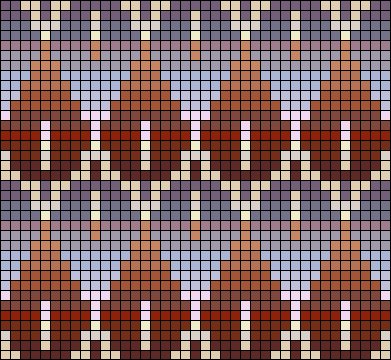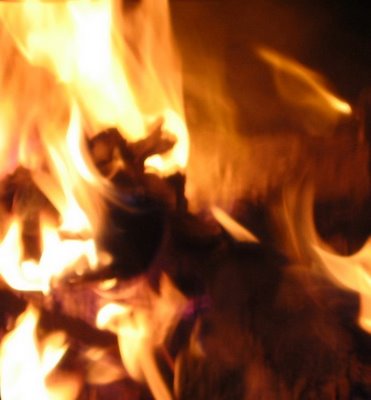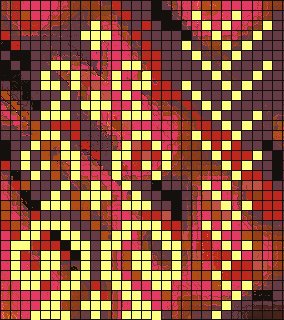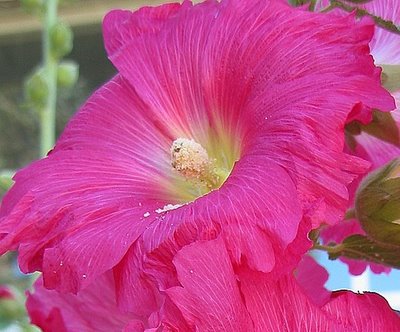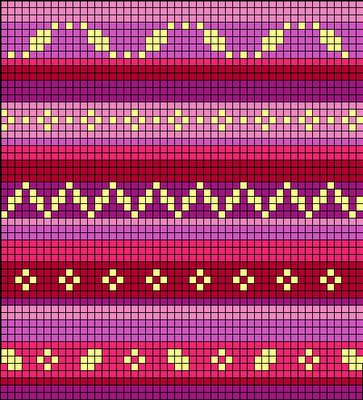Saturday, November 18, 2006
Wednesday, November 08, 2006
Sodden

![]()
Chocolate, lavender, and a touch of cream - who knew soggy decay was so delectable?

The Colour of Water
On the way, we crossed one of the glacial creeks that feed Lost Lake:
I was struck by the contrast between the turbulent bits and the silty gray-green of the still water.
Pixellated:
The palette:
And the pattern:
The geometric pattern is adapted from an authentic Kurdish sock found in Anna Zilboorg's book. (I've been spending a great deal of time in that book while designing the scarf, and though this pattern won't fit in that project, it's one I've always admired.) I tried not to overthink the arrangement of the colours - I find I can easily get carried away with the mathematics of sequence and contrast.
Dawn
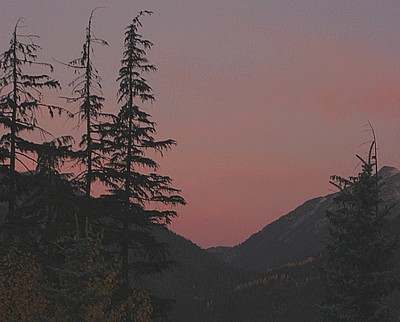
I have always been fascinated by the colour progression of sunrise:
![]()
The subtly graduated palette:
Sunday, October 08, 2006
Pink Daisies
This is photo from my parents' yard, which they sent the other day:
It's an extraordinarily lovely picture, but the colour range is really only this:
The most striking pattern feature is those sunny yellow polka dots on a cotton candy pink ground - not something I'd wear, but perfect for a little girl's spring cardigan. Intarsia is (still) not my thing, however, back when my son was born, I played for a while with a modular garter stitch garment in brightly coloured cotton. He outgrew that particular yarn supply before I got anywhere with it, but I loved the way the cotton behaved in a multidirectional garter stitch.
Perhaps something along these lines:
Cedar: Part 1
A close look reveals a branching pattern which would be lovely interpreted in twisted stitches (a future project):
What looks at a glance like a monochromatic dull green, is in fact, a whole range of hues:
The "squinty view":
reveals both a blue-green and a yellow-green range of hues.
Since a core principle of Fair Isle is the maintenance of consistent contrast between saturation levels, I tried playing with the saturation setting in the photoeditor. On the top is the blue-green palette, with the identical set of hues in saturated (left) and desaturated (right) form. On the bottom is the yellow-green palette with the desaturated version on the left, and saturated on the right.
I created a simple interlocking pattern of branches in order to play with the colour combinations.
Here is the saturated version of the yellow-green range set against desaturated blue-greens:
Saturated blue-greens against desaturated yellow-greens:
Both ranges equally saturated - note in this case how the middle hues don't really contrast sufficiently:
If a uniformly saturated palette were imperative, one could experiment with eliminating the middle hue range, or toss in a complementary colour for extra spark - perhaps the reddish brown of cedar bark? There's infinite scope for play.
Monday, August 07, 2006
Tree Bark With Lichens
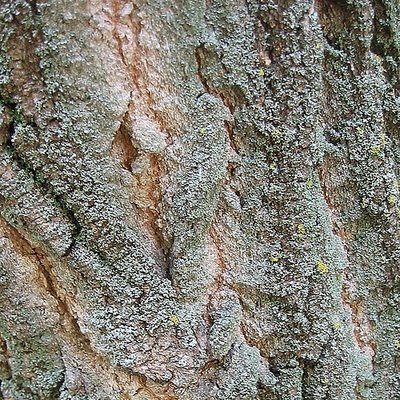
I pulled out quite a wide range of colours: 
A 30 x 22 stitch repeat: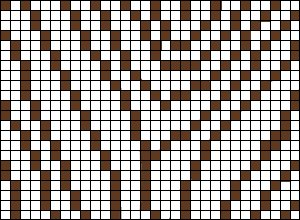 Carefully plotted so that all four sides line up thus:
Carefully plotted so that all four sides line up thus: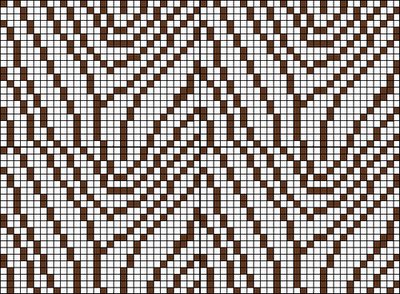
I envision pulling colours from the palette above, and arranging them in random stripes , with the pattern in a deep chocolate brown or even a charcoal gray. Then again, a suitably hued handpaint would also make a lovely background. In the original photo, I love the way the little bits of buttery yellow lichen on the bark make the rest of the colour scheme pop - I would be tempted to duplicate stitch a few spots here and there for effect.

